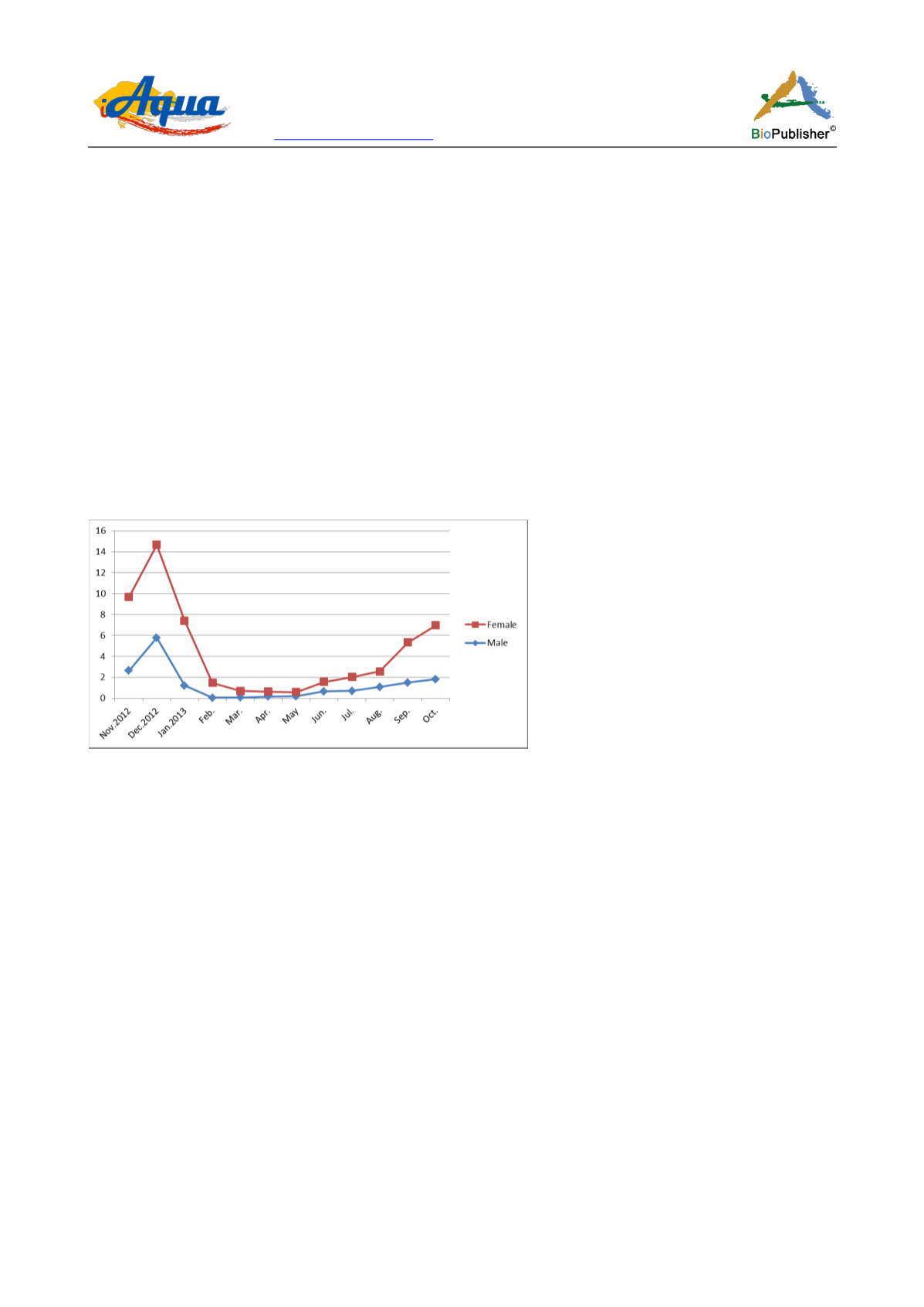
International Journal of Aquaculture, 2016, Vol.6, No.5, 1
-
14
9
3.7 Gonado - somatic index (GSI)
In the present study the gonado - somatic index (GSI) was monthly investigated during the period from November
(2012) to October (2013).
3.7.1 Females GSI
The monthly variations of the GSI values are shown in (Figure 10). The average GSI for females were very small
(0.921 ±0.091) at the beginning of the developing and maturing stage that represented the pre-spawning period. It
increased gradually at the mature and spawning period to reach very high value (8.883 ±0.867) in December
(spawning period). Then GSI decreased again to reach the minimum value (0.397 ±0.047) in May at the end of
spent stage.
3.7.2 Male GSI
The monthly fluctuations of GSI values are shown in (Figure 10). The average GSI for males were very small
(0.075 ±0.012) after the rearing period (immature and recovery stage). It was elevated to record (1.808 ±0.172) in
October. The spawning period demonstrated the highest peak for GSI in December (5.788 ±0.517). From this
peak GSI started to decrease in value until reached the minimum value (0.039 ±0.002) in February at the end of
rearing period.
Figure 10 Monthly variation in gonad-somatic index of males and females of
L. carinata
in Suez Bay
In the present study GSI varied for female and male from (0.921 to 8.883) and from (0.039 to 5.788) respectively,
showing relatively high GSI for females
L.carinata
(8.8) than males (5.7), GSI increase progressively with
increase in the percentage of ripe individuals towards the spawning season (Mohamed, 2010). GSI showed the
highest value with one peak in December for both sexes, this was the same with (Mahmoud, 1997; Abou – Seedo
and Stephen, 2004; Hakimelahi et al. 2011 and Hashemi et al,. 2013) for the same species, and with (Rheman et al.
2002) for
L. parsia
, while the smallest GSI value of
L. carinata
was recorded in February and May for males and
females, respectively. On the contrary of (Albieri et al., 2010) recorded the peak of GSI in June for
M.liza
in
Tropical bay. (EL – Halfawy et al., 2007) was recorded the highest value of males
L. ramada
closely related to the
present study (5.03), and with a large increase for females (12.4) form
L. carinata,
while (Hsu et al., 2007)
recorded a great increase of GSI value of
M. cephalus
for both male and female at (19-21) respectively, in
Northeast of Taiwan.
The GSI can be used for determination of spawning period, which was recorded from November to March for
females and males, showing prolonged spawning period which based on the presence of large number of males and
females in stage V to VII (mature to spent) coupled with very high value of GSI recorded in this period. The
following table (Table 3) mention the spawning periods for some species of mullet in different regions.
There are a slight variation in spawning time because of different environmental parameters, such as temperature,
light, and salinity which cause changes in physiological activities and sunsequental spawning time (King, 2007).


